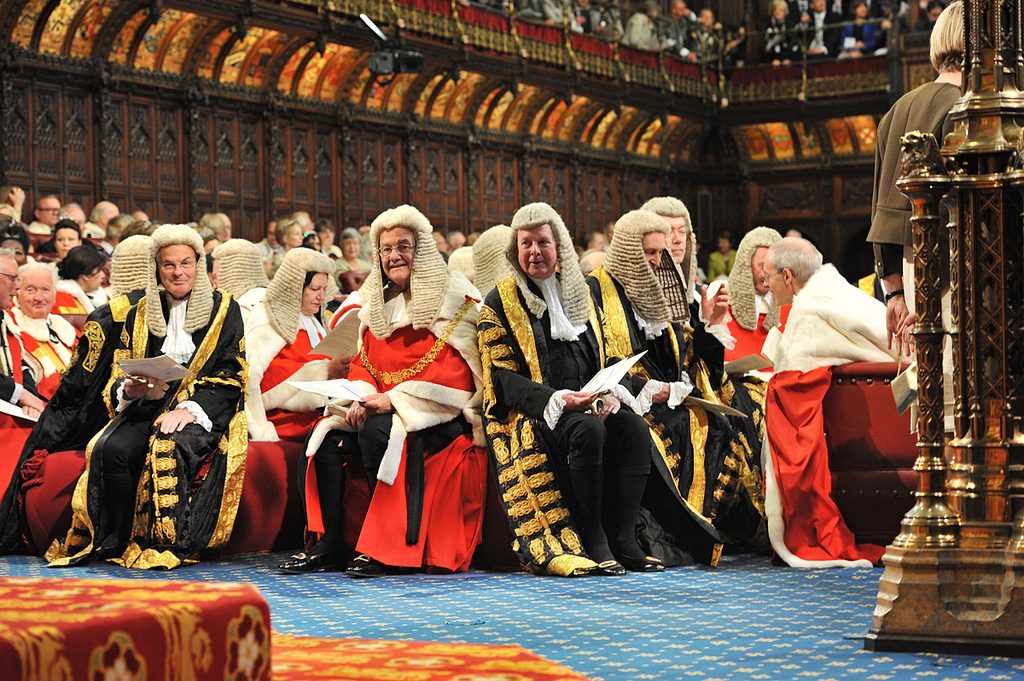
Dr Jule Mulder, Lecturer in Law, University of Bristol Law School
European non-discrimination law is a great example of how legal ideas travel around the globe and are modified and improved in the process.
As well demonstrated by Fredman[1]and Schiek,[2] non-discrimination law did not originate in Europe nor can the European influence be negated.
For example, the concept of indirect discrimination can be traced back to international law and was also pioneered in the US case of Griggs v Duke Power,[3] which challenged under the Civil Rights Act 1964 employment practices that required High School diplomas in order to access specific jobs.
This US legal development then inspired European Common Law jurisdictions—most notably the UK—to incorporate similar concepts in their national law (see e.g. Sex Discrimination Act 1975 and Race Relations Act 1976), and the concept of indirect discrimination finally reached the EU in the early 1980s when the Court of Justice of the European Union (CJEU) explicitly referred to the Griggs in its Jenkins Judgment,[4] a case which also originated in the UK.
However, this initial influence from the UK and other common law jurisdictions did not halt in this development. Rather, what started as a relatively insignificant equal pay provision in the Treaty of Rome (Article 119 EEC) and a political compromise between Germany and France,[5]has developed into a large equality framework protecting the characteristics of sex, race and ethnic origin, religion and belief, age, disability, and sexual orientation (e.g. Directives 2000/43, 2000/78 and 2006/64) and goes beyond employment discrimination by also tackling sex and race discrimination within the access to and supply of goods and services (Directives 2000/43 and 2000/113).
The 2000 directives expanding the personal scope of EU non-discrimination law were particularly affected by Anglo-Dutch intellectual thought and influence,[6] as jurisdictions that had most significant experience with non-discrimination law covering a wide number of protected characteristics. These new directives, alongside the CJEU interpretation of all the directives and equal pay provision (now Article 157 TFEU), then in turn influenced the law of the Member States including the UK legal framework.

The Royal Courts of Justice in London, home of the Senior Courts of England and Wales. Credit- Anthony M. from Rome, Italy, Flickr
This very much influenced the social, and possibly substantive interpretation of EU non-discrimination law. While the original political reason to introduce equal pay provisions was very much focused on the economic aim
‘to avoid a situation where undertakings established in [Member] States which have […] implemented [non-discrimination law] [i.e. France] suffer a disadvantage in the intra-union competition as compared with undertakings established in States which have not yet eliminated discrimination […]’,[7]
the CJEU always recognised the social/human rights dimension of non-discrimination law and considered the principle of non-discrimination to constitute a general principle of EU law.[8] Member States’ legislators and courts are thus challenged to implement a comprehensive and coherent equality framework, even if the concept is foreign to their national legal tradition, and to give effect to the principle of non-discrimination.
As a consequence, many Member States implemented general anti-discrimination or equal treatment acts that provide comprehensive equality frameworks for all the protected characteristics, often going beyond the requirements of the EU directives on equal treatment and non-discrimination.
Focusing on the UK, the Equality Act 2010 (EA 2010) can serve as an example here. The EA 2010 is a UK “grassroots” development that goes beyond EU law requirements (which did not mandate the introduction of one coherent act on equality and non-discrimination), and came into being as the result of a decade-long campaigning by equality specialists and human rights organisations.
One of the key functions of the EA 2010 is to consolidate the multitude of previous equality instruments in force in the UK, and to bring all grounds of discrimination into one framework, thus simplifying the law. Surely, the EU’s willingness to broaden the personal scope of non-discrimination law and the introduction of new legal concepts such as harassment and reasonable accommodation encouraged such a development.
In England this resulted in what Hepple[9] calls a transformative Act, which shifts away from the ‘negative duties not to discriminate’ and instead leaves room for positive actions within the private and public sector, as well as creating a public sector equality duty. It is thus more likely to foster substantive equality.

Harriet Harman QC MP, who led on and introduced the Equality Act 2010.
Credit – University of Salford Press Office
The focus on fostering substantive equality has been further supported by the EU equality directives’ requirement to introduce equality bodies for the ‘promotion, analysis, monitoring and support of all persons without discrimination on grounds of sex’ (Article 20 Recast Directive 2006/54) and race and ethnic origin (Article 13 Race Directive 2000/43), which encouraged many Member States to introduce bodies responsible for the promotion of equality irrespectively of all protected grounds.
National non-discrimination law inter alia implementing the EU directives is thus neither a purely national, nor a purely European product. Instead, the rather fruitful dialogue between the national courts and the CJEU (and indeed the European Court of Human Rights, although not being a court of the European Union), as well as the governments of the Member States, helped develop the legal concepts and pushed for a substantive interpretation of the protected characteristics and the concepts of direct and indirect discrimination.
It was the CJEU which first held that the dismissal of an employee undergoing gender reassignment would constitute unlawful sex discrimination.[10] It was also the CJEU which, in Dekker, recognised pregnancy discrimination to fall within the scope of sex discrimination.[11] It was the same CJEU in Marukothat challenged tax and benefit practices which excluded people in legally recognised same-sex civil unions or life partnerships from benefits available to (opposite-sex) married couples even if they are in a comparable situation.[12]
All of these cases originated in the EU Member States and occurred because discriminatory national practices affected individual European citizens who managed to convince their national courts to reach out to the CJEU via the preliminary procedure (Article 267 TFEU) to clarify, determine, and potentially broaden the personal and material scope of EU non-discrimination law and consequently strengthen the protection on national level.
The CJEU case-law’s influences then often go beyond the scope of EU law. For example, Lady Hale in Bull v Hall heavily relied on the Maruko judgment when assessing whether a bed and breakfast’s refusal to house a same-sex couple in a civil union because of religious grounds constituted unlawful (direct) discrimination.[13] She did so, although there is no EU directive which prohibits discrimination on grounds of sexual orientation outside the scope of employment.

Stonewall UK marching at London Pride 2011. Credit – Fae, Flickr.
What does all of this mutual influence between the EU and the Member States in the field of equality law mean in a case of ‘Brexit’? Will the UK lose its modern, and in many ways exemplary, non-discrimination law under the EA 2010? No, of course not. It would be in UK’s power to keep or ‘reimagine’ its non-discrimination law, and could do so by taking inspiration from the EU legal framework as well as other non-European legal frameworks, as in fact it has done in the past.
However, the UK would lose two structural advantages if it were to decide to place itself outside of the EU, which in my view have been instrumental in the development of the current UK non-discrimination law framework.
Firstly, it would lose its seat on the table. That is true regarding legislative proposals, but even more so, and in my view more importantly regarding non-discrimination law, in the judicial development and interpretation of EU law.
The CJEU’s interpretation of EU non-discrimination law is not developed out of thin air. Rather, it is the product of judicial engagement and the dialogue between the European and national courts. The preliminary reference procedure encourages such a dialogue between courts and forces the CJEU to listen to national courts’ concerns and questions.
It is the national courts that can point at problems with the current legal interpretation and new legal areas in which non-discrimination law may be relevant. The dialogue is thus not a one-way street; the CJEU learns from the national courts and the national courts learn from the CJEU and from each other. Excluding the UK judiciary from this process can potentially be damaging for the quality of judicial interpretation in the UK, as well as in the EU.

Members of the judiciary in the Lords chamber ahead of the Queen’s Speech 2013. Credit – Houses of Parliament, Flickr
Secondly, once it left the EU, the UK would face new economic incentives to reduce its protection under non-discrimination law, irrespectively of political or ideological allegiances. For that, it would be good to remind ourselves of the reasons why Article 119 EEC was first introduced in the Treaty of Rome.
As mentioned above, France was concerned that its constitutional equal pay provision would put French companies at a competitive disadvantage compared to other companies which could pay their female employees a lower wage than their male employees. A UK government/legislator outside of the EU could be enticed to reduce the level of protection under the EA 2010 with the aim of giving UK companies a competitive advantage compared to their EU/EEA competitors.
That UK governments do not shy away from such actions has already been demonstrated by the Conservative/Liberal Democratic Coalition, which significantly reduced the transformative potential of the EA 2010 in the name of deregulation and competitiveness.[14] One may consider this a good thing or even a demonstration of democracy in action.
However, it is not difficult to see how a UK government facing turbulent economic times and having put UK businesses in the position of having to compete with the rest of the world outside of a trading block, would feel like there is little choice other than to reduce the level of protection and return to the ineffective and formalistic legal framework which was first introduced in the 1970s, even if this does not comply with their political ideology or political programme. In such a situation, the future of UK non-discrimination law would be all but certain.
Jule’s book entitled ‘EU Non-Discrimination law in the Courts: Approaches to Sex and Sexuality Discrimination in EU law’ (Oxford: Hart Publishing) is coming out in autumn 2016. She has also done some work on more theoretical aspects of the CJEU and national courts dialogue, which will be published in an article entitled ‘How to compare harmonised law. A culturally-informed three-step approach to disentangle the complexities of comparing harmonised law’.
The views expressed here are personal views and do not reflect the views of the funders of our research or of PolicyBristol.
[1] Discrimination Law, 2nd edn, Oxford, Oxford University Press, 2011.
[2] in Schiek, Waddington, Bell (eds), Non-Discrimination Law, Oxford, Hart Publishing 2007, chapter 3.
[3] 401 US 424, 91 S Ct 846 (1971).
[4] Case C-96/80, EU:C:1981:80.
[5] A van der Vleuten, The Price of Gender Equality Hampshire, Ashgate, 2007.
[6] Geddes and Guiraudon, ‘Britain, France and EU Anti-Discrimination Policy’ (2004) 27 West European Politics 334.
[7] Defrenne v Societe anonyme belge de naviation aerienne Sabena, C-43/75, EU:C:1976:56, paras 8-11.
[8] See e.g. Mangold v Helm, C-144/04, EU:C:2005:709.
[9] Equality, 2nd edn, Oxford, Hart Publishing, 2014, 1.
[10] P v S and Cornwall County Council, C-13/94, EU:C:1996:170.
[11] Dekker v Stichting Vormingscentrum voor Jong Volwassenen, C-177/88, EU:C:1990:383.
[12] Maruko, C-267/06, EU:C:2008:179.
[13] [2013] UKSC 73, [2014] Eq LR 76.
[14] Hepple, Equality, 2nd edn, Oxford, Hart Publishing, 2014, 1-10.
